Related Research Articles

Frank Helmut Auerbach is a German-British painter. Born in Germany, he has been a naturalised British subject since 1947. He is considered one of the leading names in the School of London, with fellow artists Francis Bacon and Lucian Freud.
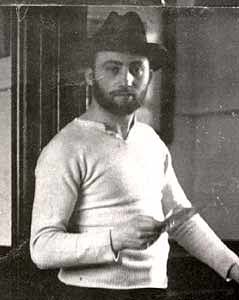
David Garshen Bomberg was a British painter, and one of the Whitechapel Boys.
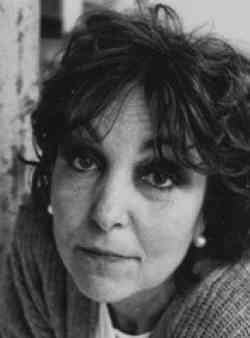
Dame Maria Paula Figueiroa Rego was a Portuguese-British visual artist, widely considered the pre-eminent woman artist of the late 20th and early 21st century, known particularly for her paintings and prints based on storybooks. Rego's style evolved from abstract towards representational, and she favoured pastels over oils for much of her career. Her work often reflects feminism, coloured by folk-themes from her native Portugal.

Pierre Bonnard was a French painter, illustrator and printmaker, known especially for the stylized decorative qualities of his paintings and his bold use of color. A founding member of the Post-Impressionist group of avant-garde painters Les Nabis, his early work was strongly influenced by the work of Paul Gauguin, as well as the prints of Hokusai and other Japanese artists. Bonnard was a leading figure in the transition from Impressionism to Modernism. He painted landscapes, urban scenes, portraits and intimate domestic scenes, where the backgrounds, colors and painting style usually took precedence over the subject.

Ronald Brooks Kitaj was an American artist who spent much of his life in England.

Ghulam Mohammed Sheikh is a painter, poet and art critic from Gujarat, India. He was awarded the Padma Shri in 1983 and Padmabhushan in 2014 for his contribution in field of art.

Giovanni di Paolo di Grazia was an Italian painter, working primarily in Siena, becoming a prolific painter and illustrator of manuscripts, including Dante's texts. He was one of the most important painters of the 15th century Sienese School. His early works show the influence of earlier Sienese masters, but his later style was more individual, characterized by cold, harsh colours and elongated forms. His style also took on the influence of International Gothic artists such as Gentile da Fabriano. Many of his works have an unusual dreamlike atmosphere, such as the surrealistic Miracle of St. Nicholas of Tolentino painted about 1455 and now housed in the Philadelphia Museum of Art, while his last works, particularly Last Judgment, Heaven, and Hell from about 1465 and Assumption painted in 1475, both at Pinacoteca Nazionale (Siena), are grotesque treatments of their lofty subjects. Giovanni's reputation declined after his death but was revived in the 20th century.

Sir Alan Bowness CBE was a British art historian, art critic, and museum director. He was the director of the Tate Gallery between 1980 and 1988.
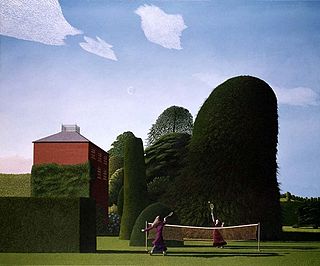
David Inshaw is a British artist who sprang to public attention in 1973 when his painting The Badminton Game was exhibited at the ICA Summer Studio exhibition in London. The painting was subsequently acquired by the Tate Gallery and is one of several paintings from the 1970s that won him critical acclaim and a wide audience. Others include The Raven, Our days were a joy and our paths through flowers, She did not turn, The Cricket Game, Presentiment and The River Bank (Ophelia).

Sir Richard Sheridan Patrick Michael Aloysius Franklin Bowling(né Richard Sheridan Franklin Bowling; born 26 February 1934), known as Frank Bowling, is a British artist who was born in British Guiana. He is particularly renowned for his large-scale, abstract "Map" paintings, which relate to abstract expressionism, colour field painting and lyrical abstraction. Bowling has been described as "one of Britain’s greatest living abstract painters", as "one of the most distinguished black artists to emerge from post-war British art schools" and as a "modern master". British cultural critic and theorist Stuart Hall situates Bowling’s career within a first generation, or “wave” of post-war, Black-British art, one characterised by postwar politics and British decolonisation. He is the first black artist to be elected a member of the Royal Academy of Arts.

Bhupen Khakhar was an Indian artist. He was a member of the Baroda Group and gained international recognition for his work as "India's first 'Pop' artist."
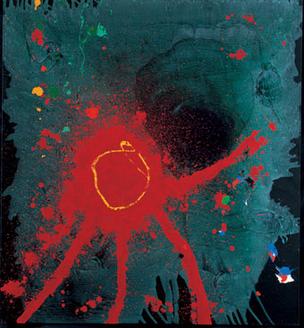
John Hoyland RA was a London-based British artist. He was one of the country's leading abstract painters.
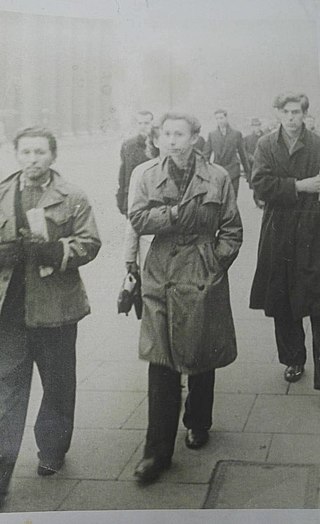
Dennis Creffield was a British artist with work owned by major British and worldwide art collections, including the Tate Gallery, The British Museum, Arts Council of England, the Government Art Collection, The Los Angeles County Museum of Art, Leeds City Art Gallery, University of Leeds collection, Williams College Museum of Art, University of Brighton collection, Swindon Art Gallery collection and others.
Paul Ludwig Horst Feiler was a German-born artist who was a prominent member of the St Ives School of art: he has pictures hanging in major art galleries across the world.
Ken Kiff, was an English figurative artist, who was born in Dagenham and trained at Hornsey School of Art 1955-61. He came to prominence in the 1980s thanks to the championship of art critic Norbert Lynton, and a cultural climate intent on re-assessing figurative art following the Royal Academy's ‘New Spirit in Painting’ exhibition in 1981. He started exhibiting at Nicola Jacob's gallery, moved to Fischer Fine Art in 1987, and finally to the Marlborough Gallery in 1990, by which time he had begun exhibiting internationally and had work in major public collections. He was elected to the Royal Academy of Arts in 1991 and became Associate Artist at the National Gallery 1991–93. His 30-year teaching career at Chelsea School of Art and the Royal College influenced a generation of students.
Peter Laurent de Francia was an Italian-British artist, who was Professor of Painting at the Royal College of Art (RCA), London, from 1972 to 1986. His paintings and drawing are included in art collections in Britain, and he was the author of two books on Fernand Léger, Leger: The Great Parade (1969) and Fernand Léger (1983), and of several articles on art.
Martin Froy was a painter of figures, interiors and landscapes; part of a school of British abstract artists which flourished between the 1950s and 70s.
Deanna Petherbridge was a South African and British artist, writer and curator. Petherbridge's practice was drawing-based, although she also produced large-scale murals and designed for the theatre. Her publications in the area of art and architecture were concerned with contemporary as well as historical matters, and in latter years she concentrated on writing about drawing. The Primacy of Drawing: Histories and Theories of Practice was published June 2010 and curated exhibitions included The Quick and the Dead: Artists and Anatomy, 1997, Witches and Wicked Bodies, 2013. She celebrated a retrospective exhibition of her drawings at Whitworth Art Gallery, University of Manchester accompanied by the monograph Deanna Petherbridge: Drawing and Dialogue, Circa Press, 2016.
The Baroda Group refers to the artists involved with the Faculty of Fine Arts at Maharaja Sayajirao University of Baroda, now known as Vadodara in Gujarat state of India. An experimental art school that drew artists of a variety of backgrounds, the Baroda Group offered an alternative to the nationalism associated with Santiniketan and the Bengal School.
You Can't Please All is an oil on canvas painting by Indian artist Bhupen Khakhar (1934–2003). Khakhar, famously recognized as India's first pop artist, completed the painting in 1981 in Baroda, Gujarat. The painting took him five months to finish.
References
- ↑ "RB Kitaj: Avatar of Ezra", The London Magazine, September 1977
- ↑ "The Subject Matter of Cezanne's Bathers", Artscribe, June Issue, 1978
- ↑ Narrative Paintings. Catalogue essay, Arnolfini. 1979
- ↑ "Howard Hodgkin". Studio International magazine. May–June 1975
- ↑ "Indian Views". (including sections on Rabindranath Tagore, Behari Mukerjee & Bhupen Khakhar) The London Magazine, July 1979
- ↑ "Kirchner's Dance", Times Literary Supplement , No. 5234, July 2003
- ↑ "Henry Darger & Adolf Wölfli", Times Literary Supplement , 30 October 1998
- ↑ "Philosophy & Reverie: the contemplative ironies of German Romantic Art", Times Literary Supplement , No. 4769, August 1994
- ↑ "8½ as an Anatomy of Melancholy", Sight & Sound magazine, Summer 1974. Reprinted in Federico Fellini: Essays in Criticism (edited by Peter Bondanella). Oxford University Press. 1978. ISBN 978-0-19-502273-5
- ↑ "Tarkovsky's Solaris". Film Quarterly, Spring 1976
- ↑ "Interview with Derek Jarman", The London Magazine, October 1980
- ↑ Christopher Allen (13 May 2017). "Timothy Hyman's World New Made: Reshaping Figurative Painting" . The Australian . Retrieved 10 February 2023.
- ↑ Carnivalesque, Review by Merlin James, The Burlington Magazine , August 2001, no. 1181, vol. 143
- ↑ "Stanley Spencer retrospective at Tate Britain", review by Peter Campbell, London Review of Books, 19 April 2001, Volume 23. No. 8
- ↑ "British Council − Art Collection − Exhibition". collection.britishcouncil.org. Archived from the original on 15 September 2009. Retrieved 12 January 2022.